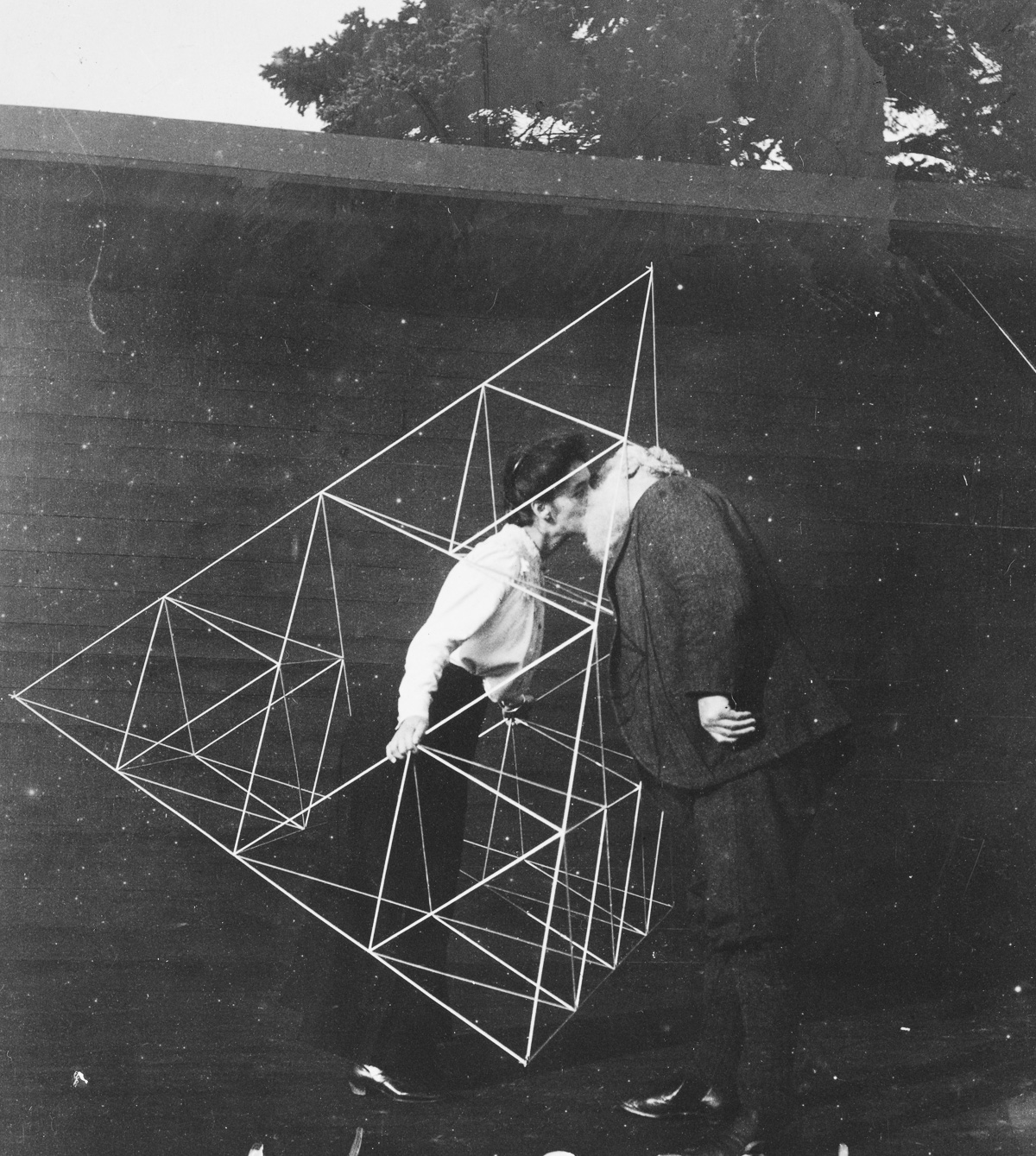Alexander Graham Bell's awesome kites

In the early 1900s telephone inventor Alexander Graham Bell became interested in kite building as part of his research into powered flight. He focused in kites made of tetrahedron cells.
From Mashable:
Bell built tetrahedral cells with 10-inch spruce rods, with two sides of each pyramidal polygon covered in crimson silk, weighing about an ounce in total.Creating compound assemblies of these pyramid-shaped cells, with shared joints and spars, allowed Bell to scale up his designs without increasing the weight-to-surface area ratio.
Bell's largest tetrahedral design, the "Cygnet," was composed of 3,393 cells. It successfully flew and carried a human passenger when towed behind a steamship, but was destroyed on landing.
That passenger, U.S. Army Lt. Thomas E. Selfridge, would later become the first person to die in a powered airplane flight as a passenger on a Wright Brothers invention.
By the way, Mashable has a bunch of great photos of Bell's kites. They are licensed by National Geographic, which charges over $700 per photo to run on the web:

I don't get it. If these photos are from the early 1900s, shouldn't they be in the public domain now?